Chrysler 2008 Annual Report Download - page 269
Download and view the complete annual report
Please find page 269 of the 2008 Chrysler annual report below. You can navigate through the pages in the report by either clicking on the pages listed below, or by using the keyword search tool below to find specific information within the annual report.-
 1
1 -
 2
2 -
 3
3 -
 4
4 -
 5
5 -
 6
6 -
 7
7 -
 8
8 -
 9
9 -
 10
10 -
 11
11 -
 12
12 -
 13
13 -
 14
14 -
 15
15 -
 16
16 -
 17
17 -
 18
18 -
 19
19 -
 20
20 -
 21
21 -
 22
22 -
 23
23 -
 24
24 -
 25
25 -
 26
26 -
 27
27 -
 28
28 -
 29
29 -
 30
30 -
 31
31 -
 32
32 -
 33
33 -
 34
34 -
 35
35 -
 36
36 -
 37
37 -
 38
38 -
 39
39 -
 40
40 -
 41
41 -
 42
42 -
 43
43 -
 44
44 -
 45
45 -
 46
46 -
 47
47 -
 48
48 -
 49
49 -
 50
50 -
 51
51 -
 52
52 -
 53
53 -
 54
54 -
 55
55 -
 56
56 -
 57
57 -
 58
58 -
 59
59 -
 60
60 -
 61
61 -
 62
62 -
 63
63 -
 64
64 -
 65
65 -
 66
66 -
 67
67 -
 68
68 -
 69
69 -
 70
70 -
 71
71 -
 72
72 -
 73
73 -
 74
74 -
 75
75 -
 76
76 -
 77
77 -
 78
78 -
 79
79 -
 80
80 -
 81
81 -
 82
82 -
 83
83 -
 84
84 -
 85
85 -
 86
86 -
 87
87 -
 88
88 -
 89
89 -
 90
90 -
 91
91 -
 92
92 -
 93
93 -
 94
94 -
 95
95 -
 96
96 -
 97
97 -
 98
98 -
 99
99 -
 100
100 -
 101
101 -
 102
102 -
 103
103 -
 104
104 -
 105
105 -
 106
106 -
 107
107 -
 108
108 -
 109
109 -
 110
110 -
 111
111 -
 112
112 -
 113
113 -
 114
114 -
 115
115 -
 116
116 -
 117
117 -
 118
118 -
 119
119 -
 120
120 -
 121
121 -
 122
122 -
 123
123 -
 124
124 -
 125
125 -
 126
126 -
 127
127 -
 128
128 -
 129
129 -
 130
130 -
 131
131 -
 132
132 -
 133
133 -
 134
134 -
 135
135 -
 136
136 -
 137
137 -
 138
138 -
 139
139 -
 140
140 -
 141
141 -
 142
142 -
 143
143 -
 144
144 -
 145
145 -
 146
146 -
 147
147 -
 148
148 -
 149
149 -
 150
150 -
 151
151 -
 152
152 -
 153
153 -
 154
154 -
 155
155 -
 156
156 -
 157
157 -
 158
158 -
 159
159 -
 160
160 -
 161
161 -
 162
162 -
 163
163 -
 164
164 -
 165
165 -
 166
166 -
 167
167 -
 168
168 -
 169
169 -
 170
170 -
 171
171 -
 172
172 -
 173
173 -
 174
174 -
 175
175 -
 176
176 -
 177
177 -
 178
178 -
 179
179 -
 180
180 -
 181
181 -
 182
182 -
 183
183 -
 184
184 -
 185
185 -
 186
186 -
 187
187 -
 188
188 -
 189
189 -
 190
190 -
 191
191 -
 192
192 -
 193
193 -
 194
194 -
 195
195 -
 196
196 -
 197
197 -
 198
198 -
 199
199 -
 200
200 -
 201
201 -
 202
202 -
 203
203 -
 204
204 -
 205
205 -
 206
206 -
 207
207 -
 208
208 -
 209
209 -
 210
210 -
 211
211 -
 212
212 -
 213
213 -
 214
214 -
 215
215 -
 216
216 -
 217
217 -
 218
218 -
 219
219 -
 220
220 -
 221
221 -
 222
222 -
 223
223 -
 224
224 -
 225
225 -
 226
226 -
 227
227 -
 228
228 -
 229
229 -
 230
230 -
 231
231 -
 232
232 -
 233
233 -
 234
234 -
 235
235 -
 236
236 -
 237
237 -
 238
238 -
 239
239 -
 240
240 -
 241
241 -
 242
242 -
 243
243 -
 244
244 -
 245
245 -
 246
246 -
 247
247 -
 248
248 -
 249
249 -
 250
250 -
 251
251 -
 252
252 -
 253
253 -
 254
254 -
 255
255 -
 256
256 -
 257
257 -
 258
258 -
 259
259 -
 260
260 -
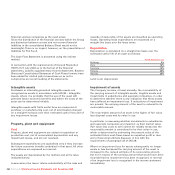 261
261 -
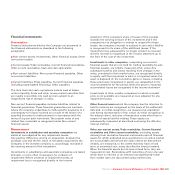 262
262 -
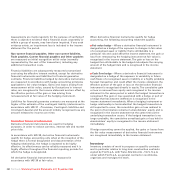 263
263 -
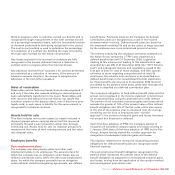 264
264 -
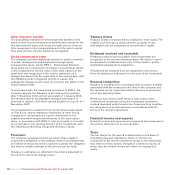 265
265 -
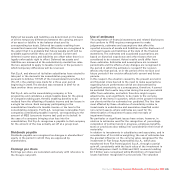 266
266 -
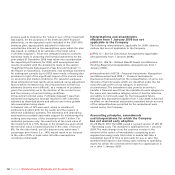 267
267 -
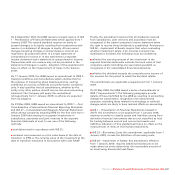 268
268 -
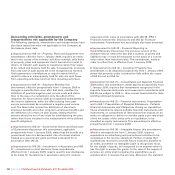 269
269 -
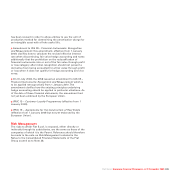 270
270 -
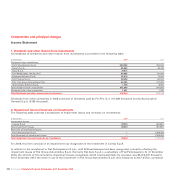 271
271 -
 272
272 -
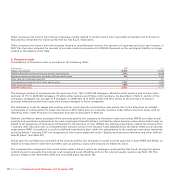 273
273 -
 274
274 -
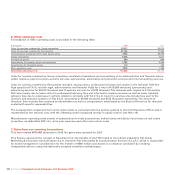 275
275 -
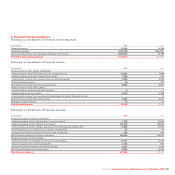 276
276 -
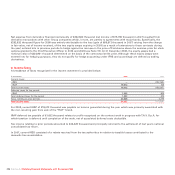 277
277 -
 278
278 -
 279
279 -
 280
280 -
 281
281 -
 282
282 -
 283
283 -
 284
284 -
 285
285 -
 286
286 -
 287
287 -
 288
288 -
 289
289 -
 290
290 -
 291
291 -
 292
292 -
 293
293 -
 294
294 -
 295
295 -
 296
296 -
 297
297 -
 298
298 -
 299
299 -
 300
300 -
 301
301 -
 302
302 -
 303
303 -
 304
304 -
 305
305 -
 306
306 -
 307
307 -
 308
308 -
 309
309 -
 310
310 -
 311
311 -
 312
312 -
 313
313 -
 314
314 -
 315
315 -
 316
316 -
 317
317 -
 318
318 -
 319
319 -
 320
320 -
 321
321 -
 322
322 -
 323
323 -
 324
324 -
 325
325 -
 326
326 -
 327
327 -
 328
328 -
 329
329 -
 330
330 -
 331
331 -
 332
332 -
 333
333 -
 334
334 -
 335
335 -
 336
336 -
 337
337 -
 338
338 -
 339
339 -
 340
340 -
 341
341 -
 342
342 -
 343
343 -
 344
344 -
 345
345 -
 346
346 -
 347
347 -
 348
348 -
 349
349 -
 350
350 -
 351
351 -
 352
352 -
 353
353 -
 354
354 -
 355
355 -
 356
356
 |
 |
Fiat S.p.A. Statutory Financial Statements at 31 December 2008268
Accounting principles, amendments and
interpretations not applicable by the Company
The following standards, amendments and interpretations have
also been issued but were not applicable to the Company at
the balance sheet date:
Improvement to IAS 16 –
Property, Plant and Equipment
: this
amendment, effective from 1 January 2009, requires an entity
that in the course of its ordinary activities routinely sells items
of property, plant and equipment that it has held for rental to
others, to transfer such assets to inventories when they cease
to be rented and become held for sale. Consequently, proceeds
from any sale of such assets are to be recognised as revenue.
Cash payments to manufacture or acquire assets held for
rental to others or subsequently held for sale are cash flows
from operating activities (and not from investing activities).
Improvement to IAS 19 –
Employee Benefits
: this
amendment, effective prospectively from 1 January 2009 to
changes in benefits that occur after that date, clarifies the
definition of positive/negative past service costs and states
that, in the case of a curtailment, only the effect of the
reduction for future service shall be recognised immediately in
the income statement, while the effect arising from past
service periods shall be considered a negative past service
cost. The Board also revised the definition of short-term
employee benefits and other long-term employee benefits and
the definition of a return on plan assets, stating that this
amount should be net of any costs for administering the plan
(other than those included in the measurement of the defined
benefit obligation).
Improvement to IAS 20 –
Government Grants and Disclosure
of Government Assistance
: this amendment, applicable
prospectively from 1 January 2009, states that the benefit of a
government loan at a below-market rate of interest shall be
treated as a government grant and then accounted for in
accordance with IAS 20.
Improvement to IAS 28 –
Investments in Associates
, and IAS
31 –
Investments in Joint Ventures
: these amendments,
effective from 1 January 2009, require specific new disclosures
to be made for investments in associates and joint ventures
measured at fair value in accordance with IAS 39. IFRS 7
Financial Instruments: Disclosures
and IAS 32:
Financial
Instruments: Presentation
has accordingly also been amended.
Improvement to IAS 29 –
Financial Reporting in
Hyperinflationary Economies
: the previous version of the
standard did not reflect the fact that a number of assets and
liabilities may or must be measured on the basis of a current
value rather than historical value. This amendment, made in
order to reflect this, is effective from 1 January 2009.
Improvement to IAS 40 –
Investment Property
: this
amendment, to be adopted prospectively from 1 January 2009,
states that property under construction falls within the scope
of IAS 40 and not IAS 16.
Amendment to IAS 27 –
Consolidated and Separate Financial
Statements
: this amendment, which applies prospectively from
1 January 2009, requires that investments recognised in the
separate financial statements and measured in accordance with
IAS 39 are subject to IFRS 5 –
Non-current Assets Held for Sale
and Discontinued Operations
.
Amendment to IAS 32 –
Financial Instruments: Presentation
and to IAS 1
Presentation of Financial Statements - Puttable
Financial Instruments and Obligations Arising on Liquidation
.
These amendments require puttable financial instruments and
instruments, or components of instruments that impose on an
entity an obligation to deliver to another party a pro rata share
of the net assets of the entity only on liquidation, to be
classified as equity instruments. This amendment is effective
prospectively from 1 January 2009.
Amendment to IAS 38 –
Intangible Assets
: this amendment,
effective retrospectively from 1 January 2009, requires
expenditure on advertising and promotional activities to be
recognised in the income statement. Further, it states that
expenditures incurred to provide future economic benefits to
an entity, but where no intangible asset is recognised, must,
for the supply of goods, be recognised as an expense when it
has the right to access the goods. In the case of the supply of
services, an entity shall recognise the expenditure as an
expense when it receives the services. Moreover, the standard
